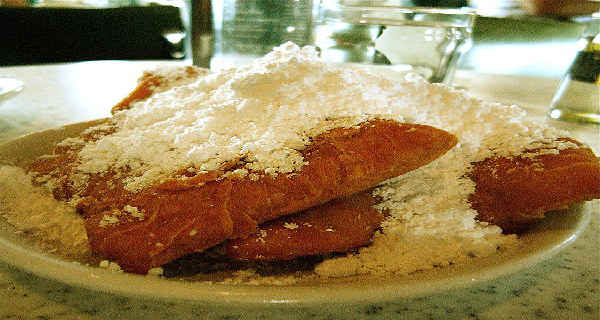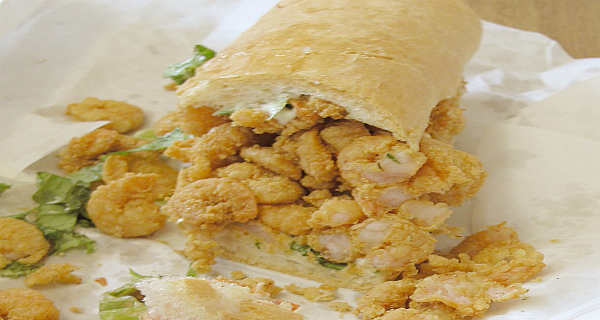Eating Out in New Orleans – A Culinary Guide
New Orleans is known by many names. While most locals will tell you the correct pronunciation is “New OAR-linz”, this vibrant city has also been dubbed “The Big Easy”, “The Birthplace of Jazz”, “Paris of the South”, “NOLA”, “N’awlins” and “The Crescent City”. But, no matter what you call it, New Orleans is one of the most unique culinary destinations in the country.
The culinary landscape of New Orleans covers a lot of ground, from street food stands to corner markets and century-old institutions like Antoine’s, right up to white tablecloth dining at Commander’s Palace. The best part is, no matter where you choose to dine, there’s a good chance the food will be great.
As a primer for your New Orleans culinary adventure, this article offers some basic information and definitions to help you learn your way around.
Cajun versus Creole
The term Cajun is typically used in reference to the French colonists who settled in the Acadia region of Canada. They were later forced from the region by the British, with many relocating to Louisiana.
Creole generally describes the descendants of the Spanish and French upper-class who ruled over New Orleans during the 18th century. Native-born slaves of African descent were also included in this classification.
As it applies to food, Cajun cuisine is generally considered “country food”, whereas Creole is deemed “city food”. This is most evident in the difference of cooking methods employed and the complexity of recipes. Cajun food is more simply prepared, down-to-earth fare. Cajuns utilize every part of a slaughtered animal in an effort to minimize waste and produce as much food as possible. Visitors often mistake this well-seasoned food as always spicy, which simply is not the case. While the kick of cayenne pepper is widely used, Cajun recipes also rely heavily on vegetables, garlic, paprika, thyme, filé (dried and ground sassafras leaves), green onions and parsley. These combinations can produce complex tastes unfamiliar to some palates, leading to the “spicy” misrepresentation.
Creole cuisine reflects many of the advantages enjoyed by the kitchens of well-to-do members of early New Orleans society. This included access to a wide variety of spices and ingredients from many regions normally unavailable to the lower classes. For example, when a Creole kitchen prepared a basic roux, they typically used butter and flour, where a Cajun kitchen would opt for the less expensive oil and flour combination. Complex recipes like remoulade sauce, which could include up to a dozen ingredients, were also restricted to well-stocked Creole kitchens.
Basic New Orleans Food Terms
Beignet

Source: https://en.wikipedia.org/wiki/File:Shrimppoboy.jpg
Correctly pronounced as “ban yea”, this sweet delicacy is like a doughnut with no hole, made from French bread dough and deep fried. It is typically served with a thick coating of powdered sugar.
Po-Boy

Source: https://en.wikipedia.org/wiki/File:BeignetsPowderdSugarCDM.jpg
For more than a century, Po-Boy sandwiches have been an important part of New Orleans cuisine. Starting with fresh French bread, the sandwich originally featured roast beef, tomatoes, lettuce and mustard. Today, it can include any number of ingredient combinations, including seafood.
Oyster Loaf
Much like a Po-Boy, this sandwich features fried oysters on French bread, with a little squeeze of lemon juice and/or Tabasco sauce on top. If you’re really hungry, order the dressed version, which includes lettuce, tomato, mayonnaise and pickles.
Muffuletta
This is yet another sandwich made famous in New Orleans. Oddly enough, this sandwich starts with round Sicilian sesame muffuletta bread stuffed with salami, ham, mortadella, cheese and topped with an olive salad.
Dirty Rice
The term dirty rice was coined due to the color added to white rice as a result of adding seasonings and chicken giblets during the cooking process.
Snowball
Much like the more widely known Italian Ice, a snowball is simply shaved or crushed ice, topped with a variety of fruit flavors.
Barbecue Shrimp
Don’t expect this shrimp dish to include a coating of barbecue sauce. The term barbecue refers to the cooking method, not a sauce. The shrimp are coated with olive oil, butter, garlic rosemary, basil, oregano, salt, black pepper, paprika, cayenne and lemon and broiled until done.
Cafe au Lait
French coffee mixed with boiling milk, which is a perfect pairing for Beignets.
Jambalaya
This is rice prepared with sausage, chicken or seafood and served as a main dish.
Etouffee
Etouffee is cajun stew made with vegetables and seafood. Crawfish etouffee is a New Orleans staple.
Gumbo
This thick soup/stew can include a nearly unlimited number of variations. It typically features okra and filé (dried and ground sassafras leaves). Some of the most common varieties are shrimp gumbo and sausage/chicken gumbo.
Red Beans & Rice
Mondays were “wash day” in early New Orleans. With the lady of the house occupied doing laundry, an easy dinner dish like Red beans was a perfect choice. It is typically served over white rice and a side of French bread.
Blackened
This isn’t a recipe, but rather a cooking method. Fish or meat coated in a thick combination of spices is cooked in a very hot cast iron pan.
While this article barely scratches the surface of Cajun and Creole cuisine, it should offer a good start on dining in New Orleans. One of the most important things to remember is to be adventurous and seek out new culinary experiences. Ask questions, be brave and try something new or strange to you. You may even find a new favorite food in the process.
Feel free to pay a visit to his backpacking blog to learn more about the best backpacking trips.
Pingback: How to Travel Safely During a Pandemic - HolidaysTourTravel